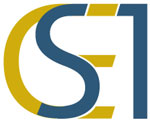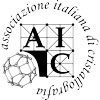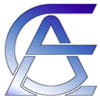
Tutorials
| Tutorial | Topic | When | |
| T1 | EPFL e-course | General crystallography | Monday, 1 Sep (plenary) |
| T2 | Bilbao C.S. | Crystallographic computer tools | Tuesday, 2 Sep (plenary) |
| T4.1 | Phenix | Macromolecular crystallography | Thursday, 4 Sep (parallel) |
| T4.2 | Sir2014 | Structure solution | Thursday, 4 Sep (parallel) |
| T4.3 | CSD + Jmol | Databases and crystal structure visualization | Thursday, 4 Sep (parallel) |
| T5.1 | MoPro | Charge density | Friday, 5 Sep (parallel) |
| T5.2 | HKL2map | Macromolecular structure refinement | Friday, 5 Sep (parallel) |
| T5.3 | TOPOS | Topological Analysis of Crystal Structures | Friday, 5 Sep (parallel) |
T1. EPFL e-Crystallography Course is an interactive course, freely available on Internet for the presentation of basic crystallography concepts. The course includes exercise and some interactive tools written in Java, which could be directly accessed on the web both by the teacher and by the students. The aim of the applet is to illustrate some basic principles of crystallography related to the notions of symmetry and diffraction. The interactivity of the applets is of course a great advantage to facilitate the students training with subjects which are not a priori obvious. Currently, applets cover most of the principles which are taught in a basic course of crystallography..
Tutor: Gervais Chapuis
Website
They will be downloaded during the tutorials. No preliminary action is required.
T2. The Bilbao Crystallographic Server is a web site with crystallographic databases and programs. It can be used free of charge from any computer with a web browser via Internet. The server has been operating for more than ten years, and new programs and applications are constantly being developed. Due to the variety of the topics related, the programs hosted on the server are grouped into the so called shells which are: Space Groups Retrieval Tools; Magnetic Space Groups; Group - Subgroup Relations of Space Groups; Representation Theory Applications; Solid State Theory Applications; Structure Utilities; Subperiodic Groups: Layer, Rod and Frieze Groups Retrieval Tools; IR, Raman and Hyper-Raman Scattering Tools; The Bilbao Inconmensurate Crystal Structure Database (B-IncStrDB).
Tutor: Mois Aroyo
Website
The software’s run mainly as applet of the used web browser. JMOL standalone version must be installed:
http://jmol.sourceforge.net/
http://sourceforge.net/projects/jmol/files/
T4.1 PHENIX is a software suite for the automated determination of macromolecular structures using X-ray or neutron crystallography. The PHENIX system also includes SOLVE/RESOLVE, Phaser, the CCI Applications (phenix.xtriage, phenix.refine, elbow and many more), components from MolProbity, and the Computational Crystallography Toolbox in a Python framework.
Tutor: Randy Read
Website
The software can be downloaded from the website:
www.phenix-online.org
Please install the official version 1.9 release. Students must agree to licence to get a password and the “Download the latest official release”. Tutorials file are included within the Phenix installation.
T4.2 Sir2014 is the latest product of the Sir family, widely used for the crystal structure solution of small/medium size and protein single-crystal structures using either X-ray or electron diffraction data. It includes many new features: MDM procedure; VLD procedure; Simulated Annealing; Molecular Replacement; improved integration with Jav, the new visualizer in 3D; possibilty to start the program using a shelx file as input.
Tutor: Carmelo Giacovazzo
Website: Website
The student should fill on-line a registration form which may be found at the address:
http://wwwba.ic.cnr.it/content/software
and follow the few instructions.
Students will be authorized to download the program or the programs to which they are interested via a password they will receive by email. In the registration form there is a field where students MUST declare their participation to the Pavia Crystallographic School.
T4.3a The Cambridge Structural Database (CSD) is the world’s repository for small-molecule organic and metal-organic crystal structures. Containing the results of over 700,000 X-ray and neutron diffraction analyses as of July 2014, this unique database of accurate 3D structures has become an essential resource to scientists around the world. Alongside the CSD, the Cambridge Crystallographic Data Centre (CCDC) produces and provides a comprehensive suite of software tools and structural knowledge-bases that enables the user to visualise, explore and utilise the knowledge contained within the CSD. This demo session will introduce you to the database and its associated software, known collectively as the CSD System, and illustrate the use of these structural data in a variety of applications. This demo session is suitable for inexperienced and experienced CSDS users alike.
Tutor: Juliette Pradon
Website
A bundled licence file for CCDC suite valid up to Sept 15th will be available. The three installers, one for Windows, one for Linus and one for OSX are available and the information will be sent by mail. Take care that the whole CCDC software will be available and the download is of 3 GB.
T4.3b Jmol is a free, open source molecular and crystal structure viewer for students, educators, and researchers in chemistry, biochemistry and the structural sciences. It is cross-platform, running on Windows, Mac OS X, Linux/Unix and mobile operating systems. A Jmol-powered enhanced figure toolkit has been developed by the IUCr. It allows users with little or no experience of Jmol to upload structural data in CIF format and use Jmol to create an interactive web page. The resulting page can show multiple visualizations, allowing the illustration of many significant features of the structure. These enhanced figures can be published in research articles submitted to IUCr journals or used as a standalone educational or presentational resource.
Tutor: Brian McMahon
Website1 and Website2
JMOL can work online as an applet of the internet browser or in standalone mode. The applet version in recommended.
MANDATORY ACTION
Students must download before the tutorial (possibly before the school) the Jmol applet going to the example pages:
http://journals.iucr.org/e/issues/2008/06/00/sg2243/sg2243fig5.html
http://journals.iucr.org/f/issues/2008/03/00/fw5161/fw5161fig4.html
OPTIONAL
The standalone version of the program Jmol.is available at the website
http://jmol.sourceforge.net/download/
Version 12.0.10 is identical to the above applet (The standalone version is mandatory for the T2 tutorial).
T5.1 MoPro (Molecular Properties) is a crystallographic least square refinement package allowing structural or charge density studies of crystal structures of variable sizes, ranging from small molecules to biological macromolecules. It implements spherical and non-spherical, multipolar model of atomic electron density, the latter being necessary to take into account the deformation of electron density arising from interatomic interactions, which becomes visible and quantifiable at subatomic resolution. Its complementary program VMoPro allows the computation of derived properties based on the multipolar formalism, as molecular electrostatic potential, topological properties or intermolecular interaction energies.
Tutors: Christian Jelsch & Claude Lecomte
Website
The software can be downloaded from the website
http://crm2.univ-lorraine.fr/lab/software/mopro/mopro-registration/
Tutorial files can be downloaded from the link sent by mail.
T5.2 HKL2map is a graphical user interface for the SHELXC/D/E suite of programs for crystallographic phasing. Anomalous, derivative, and native data can be analyzed in terms of data quality and estimates for substructure structure factors can be extracted with SHELXC. SHELXD can then be employed to determine substructures of anomalous scatterers or heavy atoms by ab initio methods. Based on the substructures and the available diffraction data, SHELXE develops an initial phase set into an optimized electron density map via iterative solvent flattening, automatic model building and phase recycling. The resulting phases can be exported to other program packages, such as CCP4 or phenix to continue with structure building and refinement. The use of HKL2MAP will be demonstrated by solving several test structures. The current connects several programs from the SHELX-suite to guide the user from analysing scaled diffraction data (SHELXC), via substructure solution (SHELXD) and phasing (SHELXE) to displaying an electron density map (Coot).
Tutor: Thomas Schneider
Website
The tutorial will be “on screen only”. Students interested in installing the HKL2MAP can go to the website:
http://webapps.embl-hamburg.de/
then the underlying SHELX-software can be obtained from:
http://shelx.uni-ac.gwdg.de/SHELX/index.php
T5.3 TOPOS is a program package for multipurpose geometrical and topological analysis of crystal structures. It works with crystal structure databases and provides calculations of geometrical and topological characteristics of crystal structures in these databases. In the tutorial, we will consider the basic concepts of computer topological analysis of crystal structures realized in the current version of the program package Topos (ToposPro). Applications of the Topos methods to various classes of chemical compounds - coordination polymers, metal organic frameworks (MOF), molecular crystals, supramolecular ensembles, inorganic ionic compounds, intermetallics, fast-ion conductors, microporous materials - are illustrated by many examples. It is shown that chemically and crystallographically different structures can be automatically treated in a similar way with Topos. A general description is freely available here. Please register and install the program with manual from http://www.topos.samsu.ru/starting.html.
Tutors: Davide Proserpio & Vladislav Blatov
Website
The software can be downloaded after registering at:
http://www.topos.samsu.ru/form.html
Then install the program with manual from:
http://www.topos.samsu.ru/starting.html
The file is a self-extracting archive:
http://www.topos.samsu.ru/Manuals/Kit/Kit.exe
Please wait... Checking Javascript functionality

If you continue to see this sentence for more than 20 seconds,
please enable Javascript in your browser.
The advanced functionality of this site depends on Javascript. We are sorry, but the contents of this page cannot be displayed by your browser in its current state.
For instructions on how to activate Javascript in your browser, you may try this link (you will be re-directed to a website not associated with Azuleon but, last time we checked, the instructions there were clear and accurate).
For any further assistance, please contact the Azuleon webmaster.
An event organised by
Under the auspices of
Deadlines
Applications:
28 February 2014
![]() New deadline
New deadline ![]()
Notification of selections:
18-04-2014
The selection committee has concluded the evaluation of the unexpectedly large number of applications received. Candidates will start receiving the results from next week onwards.
Abstract submission:
16 June 2014
Payment:
16 June 2014




